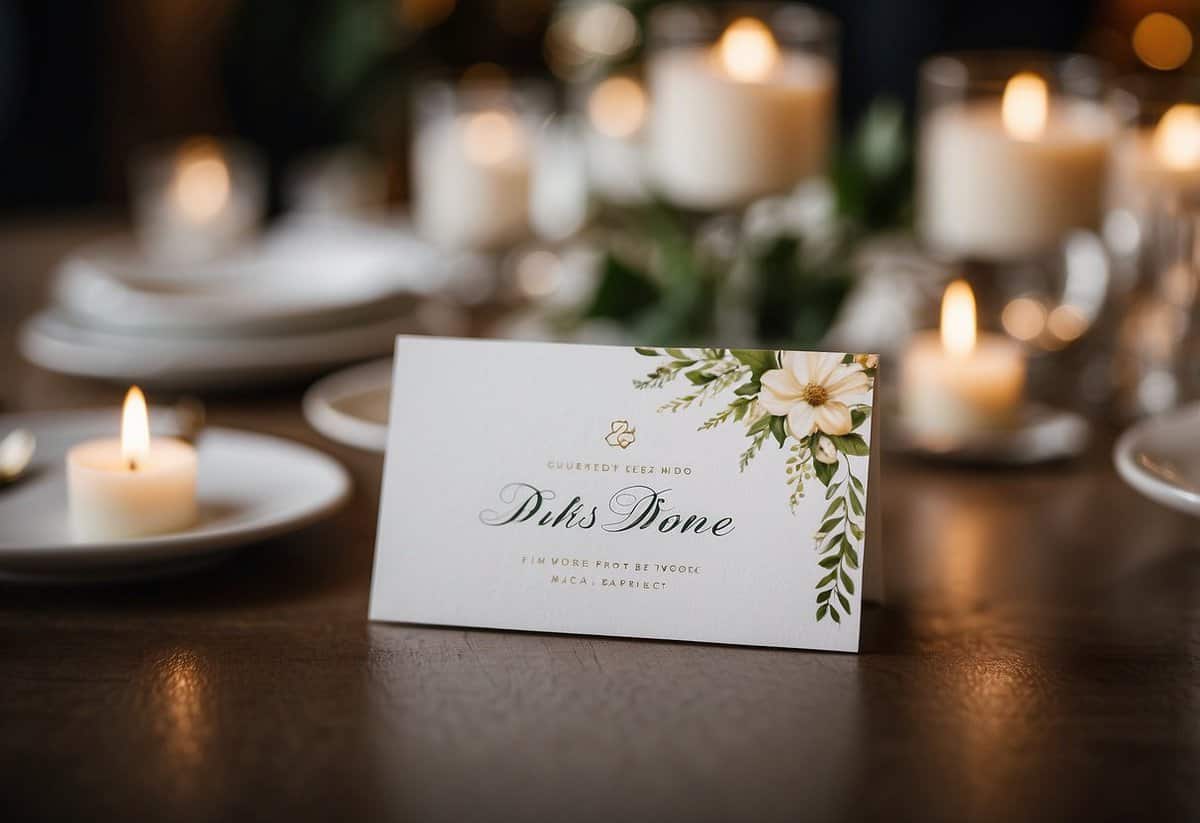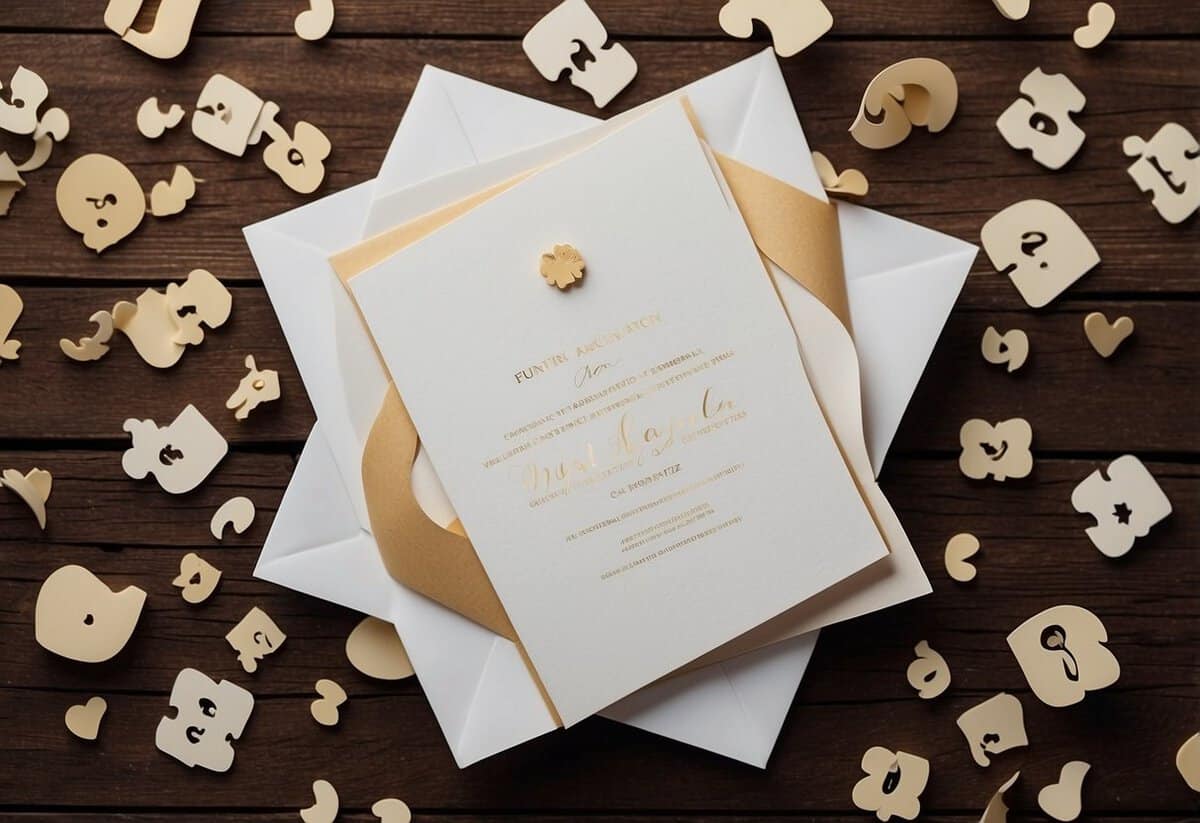Does Everyone Get a Plus One to a Wedding? Tips and Etiquette
Wondering if everyone gets a plus-one to a wedding? The answer is no, not everyone automatically gets to bring a guest. Wedding planning often involves tough decisions, especially when it comes to who gets a plus-one. This is where wedding etiquette comes into play, guiding couples on who should have the privilege of bringing a guest.

Married couples almost always get a plus-one, along with those who are engaged. If you have close friends or family members in long-term relationships, their partners typically get an invite too. For single guests, it’s usually about whether they know many people at the wedding or play a significant role, like being in the wedding party.
When you receive your wedding invitation, check it carefully to see if a plus-one is included. Some invitations will clearly mention an “invited guest,” while others might leave it up to a conversation with the couple. If you’re unsure, a quick chat with the soon-to-be newlyweds can clarify things and ensure you’re on the same page.
Understanding Plus-One Etiquette

When planning a wedding, deciding who gets to bring a plus-one can be tricky. Understanding the basics, navigating relationship statuses, and knowing proper invitation etiquette can simplify this process.
The Basics of Plus-Ones
A plus-one allows a guest to bring an additional person, usually their date, to a wedding. This typically applies to single, unmarried guests and can depend on the event’s size and budget. If the guest list is limited, only certain individuals may receive plus-one privileges. It’s common to give plus-ones to members of the wedding party and those who won’t know many people at the event.
Offering a plus-one can make guests feel more comfortable, especially if they don’t know many other attendees. This gesture emphasizes hospitality and inclusivity.
Navigating Relationship Status
The relationship status of your guests plays a significant role in deciding who gets a plus-one. Married guests and those in serious relationships should be allowed to bring their partners. Engaged couples also come under this category, as they are soon to be spouses.
For guests who are dating casually or just single, you have more flexibility. It’s polite to consider the nature of the relationship and your familiarity with the guest’s partner. For example, if a guest is in a long-term, committed relationship, it’s kind to include their partner in the invitation.
Invitation Etiquette
Proper invitation etiquette is essential when addressing plus-ones. Instead of writing “plus-one” on the invitation, use “and guest” for formality. This small change makes your invite more respectful and considerate. When listing guests, ensure you write full names to avoid any confusion.
RSVP cards should also reflect plus-one allowances. If a guest is permitted to bring someone, the card should have a space to write the additional name. Doing this helps with accurate planning and seating arrangements. Ensuring clarity in your invitation wording can prevent misunderstandings and ensure a smooth wedding planning process.
Allocating plus-ones thoughtfully while addressing etiquette helps you manage your guest list and make everyone feel welcome.
Crafting Your Guest List

Creating a wedding guest list can be challenging. You need to consider factors such as the size of the wedding, your budget, and the composition of the guest list. Each factor plays a crucial role in determining who gets a plus-one and who doesn’t.
Determining the Size of Your Wedding
The size of your wedding will heavily influence your guest list. Small, intimate weddings often have more restricted guest lists, meaning fewer plus-ones are offered. If you plan a larger gathering, more guests can have the chance to bring a date.
Think about your venue’s capacity. A smaller venue may force you to limit the number of guests. Ensure there is enough space not just for immediate family but also for single guests who might want to bring a date.
Being clear about the number of people your venue can hold helps avoid possible overcrowding and keeps everyone comfortable.
Considering Your Budget
Your budget is another key factor in deciding your guest list. Each guest adds to your wedding expenses, from catering to favors. Offering plus-ones can significantly increase costs, especially if you’re planning a luxury wedding.
Start by setting a clear budget. Determine how much you can afford to spend per guest. Include costs like food, drink, and seating arrangements. This will help you decide if you can afford to give single guests a plus-one.
Be mindful of hidden costs. Extra guests mean more chairs, tables, and possibly a larger venue. Keeping your budget in check ensures you don’t overspend and helps maintain a happy and financially stable start to married life.
Guest List Composition
The composition of your guest list is crucial. Traditionally, married couples and engaged couples receive a plus-one automatically. Immediate family members also usually bring their spouses or partners.
For single guests, consider giving plus-ones based on their relationship status or how well they know other guests. For example, if someone doesn’t know many others at your wedding, allowing them to bring a friend can make them feel more comfortable.
Co-workers are another group to consider. Depending on your relationship, you might decide to invite some with a plus-one while others without. Balance your list to ensure everyone feels included while respecting your set criteria.
Plus-One Invitation Guidelines

When planning your wedding, you’ll need to decide who gets to bring a guest. This can be a tough call, but clear guidelines can make it easier.
Deciding Who Gets a Plus-One
First, consider your budget and venue capacity. Make a list of people you definitely want to invite. Then, think about who might benefit from having a guest. For instance, wedding party members and VIP guests who won’t know many people should get a plus-one.
You should also contemplate the impact of allowing single friends and family members to bring a date. Some weddings use the “no ring, no bring” rule, meaning only those in serious relationships are allowed a plus-one.
Married and Engaged Guests
It’s customary for married and engaged guests to bring their spouse or fiancé. You should always invite both members of these couples. This is true even if you don’t know the spouse or fiancé very well.
When addressing invitations, list both names on the outer envelope to avoid confusion. Married couples get to bring their partner for life, and engaged couples are also expected to attend together, as they are considered a unit.
Long-Term Relationships
For guests in long-term relationships, even if they’re not married or engaged, it’s courteous to invite their partner.
This helps make these guests feel more comfortable at your wedding. If a guest has been in a serious relationship for a couple of years, it’s a safe bet they’ll appreciate being allowed a plus-one. For these invitations, it’s best to avoid assumptions—communicate clearly and address invitations correctly.
Remember, it’s better to be clear about your plus-one policies on the RSVP cards to prevent misunderstandings.
The Logistics of Plus-Ones

Managing plus-ones for a wedding involves careful planning with RSVPs, seating layouts, clear communication, and dealing with sensitive situations.
RSVP Management
Managing RSVPs can be challenging. You must track who’s bringing a guest and who isn’t. Make sure your wedding invitations clearly state if a plus-one is allowed. For example, use phrases like “and guest” if you don’t know the plus-one’s name. Providing a response card with checkboxes can help make this clear.
Use a spreadsheet or wedding planning software to keep track of responses. This helps you see who’s bringing a guest and ensures you stay organized. Confirm details a few weeks before the wedding to avoid last-minute surprises.
Seating Arrangements
Creating a seating chart is crucial for a smooth event. Once you know who’s bringing a plus-one, consider relationships and dating status when planning your seating. Try to seat couples together and place people who know each other at the same table.
Use a mix of table sizes to accommodate different groupings. Don’t forget to account for any special relationships or guest needs. Flexible seating charts help adjustments become easier if your guest list changes.
Communicating Clearly with Guests
Clear communication is key to avoiding misunderstandings. Mention on your invitations if plus-ones are allowed. You might use phrases like “We have reserved __ seats in your honor” to specify the number of guests included.
Be gracious when explaining space limitations. Politely inform guests without a plus-one that the decision was made to accommodate everyone comfortably. Ensure your wording is kind and considerate to avoid guests feeling left out.
Handling Sensitive Scenarios
Sensitive scenarios can arise when dealing with plus-ones. For example, deciding on a case-by-case basis can help. If single guests feel left out, explain your decision privately. Being personable and considerate can alleviate any hurt feelings.
At times, married couples or long-term partners should be prioritized for plus-ones. Be respectful and try to accommodate as many guests as the venue and budget allow. Gracious communication can help smooth over any sensitive matters.
Celebrating Your Big Day

Making your wedding day special involves creating a welcoming atmosphere, acknowledging the support of your loved ones, and fostering connections among your guests.
Creating a Welcoming Atmosphere
When planning your wedding, consider how to make everyone feel comfortable and appreciated. Start by greeting your wedding guests warmly as they arrive. Use signage to guide them to the ceremony and reception areas.
Offer refreshments as attendees enter the venue. A small drink station or appetizers can go a long way. Think about the little details, like arranging seating so guests can easily chat and enjoy the event. Personalized place settings, like a special note or small gift on each plate, make a polite gesture.
Your wedding budget might include providing transportation for guests or a child care service. These thoughtful touches show you care about everyone’s comfort, ensuring they have a memorable experience.
Acknowledging Your Guests’ Support
Your wedding guests, bridal party, and family members have played a big part in your big day. It’s important to thank them for their support.
During the reception, take a moment to give a speech to express your gratitude. Mention specific individuals who have helped, whether it’s the bridal party for their ongoing support or a friend who offered valuable advice.
Consider handwritten thank you notes or a small token of appreciation to show your heartfelt thanks. This can be done either at the event or sent shortly after. A personalized approach makes your appreciation more meaningful and lets guests know their presence and support mattered to you.
Fostering Connections at Your Wedding
A wedding is not just a celebration of the bride and groom but also an opportunity to connect friends and family. Help everyone feel included by planning interactive activities.
Arrange a mix of seating to encourage mingling. Use games or icebreakers to help guests who may not know each other. Photo booths and group dance floor activities also create fun moments.
During dinner, assign table hosts who can facilitate conversation and keep the mood lively. By focusing on fostering these connections, you not only enrich the day for your guests but also build lasting memories and moments of joy for everyone involved.
Feel free to adjust these suggestions to fit your specific situation and what you feel will best serve your wedding and guests.



